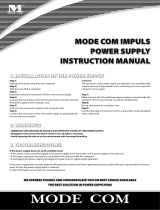
Contents
Chapter 1. About this manual . . . . . 1
Important Safety Information . . . . . . . . . 1
Chapter 2. Safety information . . . . . 3
General safety . . . . . . . . . . . . . . . 3
Electrical safety . . . . . . . . . . . . . . 3
Safety inspection guide . . . . . . . . . . . 5
Handling electrostatic discharge-sensitive
devices . . . . . . . . . . . . . . . . . 5
Grounding requirements . . . . . . . . . . . 6
Safety notices . . . . . . . . . . . . . . . 6
Chapter 3. General information . . . . 9
Specications . . . . . . . . . . . . . . . 9
Chapter 4. General Checkout . . . . . 11
Problem determination tips . . . . . . . . . . 11
Chapter 5. Using the Setup Utility. . . 13
Starting the Setup Utility program . . . . . . . 13
Viewing and changing settings . . . . . . . . 13
Using passwords. . . . . . . . . . . . . . 13
Using Device . . . . . . . . . . . . . . . 15
Selecting a startup device . . . . . . . . . . 15
Exiting from the Setup Utility program . . . . . 16
Chapter 6. Symptom-to-FRU Index . . 17
Hard disk drive boot error . . . . . . . . . . 17
Power Supply Problems . . . . . . . . . . . 17
POST error codes . . . . . . . . . . . . . 18
Undetermined problems . . . . . . . . . . . 18
Chapter 7. Replacing hardware . . . . 21
General information . . . . . . . . . . . . . 21
Hardware components . . . . . . . . . . . 22
Replacing a memory module . . . . . . . . . 26
Replacing the optical drive . . . . . . . . . . 27
Replacing the hard disk drive . . . . . . . . . 29
Replacing the keyboard and mouse . . . . . . 31
Replacing the power cord . . . . . . . . . . 32
Removing the speaker cover . . . . . . . . . 32
Removing the computer cover . . . . . . . . 34
Replacing the converter board . . . . . . . . 35
Removing the computer stand . . . . . . . . 36
Removing the EMI cover . . . . . . . . . . . 37
Replacing the system fan . . . . . . . . . . 38
Replacing the TV tuner card . . . . . . . . . 40
Replacing the WLAN card . . . . . . . . . . 41
Replacing the heatsink . . . . . . . . . . . 42
Replacing the CPU . . . . . . . . . . . . . 44
Replacing the rear I/O module . . . . . . . . 46
Replacing the speaker system . . . . . . . . 48
Replacing the motherboard. . . . . . . . . . 49
Replacing the camera . . . . . . . . . . . . 51
Replacing the front indicator and power button
board . . . . . . . . . . . . . . . . . . 52
Replacing the front function board . . . . . . . 53
Replacing the LED panel. . . . . . . . . . . 54
Chapter 8. Additional Service
Information . . . . . . . . . . . . . . 57
Copyright Lenovo
i




















